|
|
 |
I have not given you a walking tour of downtown buildings. There are plenty of guidebooks; one of my favorites
is Judith Prine McBrien's, Pocket Guide to Chicago Architecture. In the end, what interests you will be
a matter of taste. Wherever you go, you should open your eyes to the history around you. These are a few tips.
|
 |
|

|
| Terracotta, Fisher Building, 343 S. Dearborn. GTJ Photo |
Look around
the downtown, and you will see that many buildings are decorated in terra cotta. Beginning in the late 1800s, Chicago
School designers used this unglazed fired clay orientation: Terra Cotta. Later
members of the Chicago School rejected ornamentation, but in the early, exuberant days of the Chicago movement, designers
looked for inspiration to the early Gothic cathedrals of Europe, which also were tall and emphasized windows.
Mythical nautical figures were particularly appropriate as subjects for a building designed in 1896 by Burnham that would be
named for its first owner, Lucius Fisher.
|
 |
|
|
 |
|
|
 |
|
|
|
|
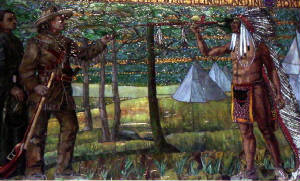
|
| Marquette Building, 140 S. Dearborn. GTJ Photo. |
Ornamentation can say
a lot about the way that history was viewed during the time that the building was built. This mosaic was designed by
the Tiffany Studio. The lobby of the Marquette Building portrays scenes from Chicago’s history, both real and
imagined, in a series of beautiful works. The building is from 1895.
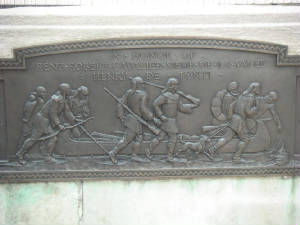
|
| Historic marker, Michigan Avenue bridge over Chicago River. GTJ Photo. |
Markers are
scattered around the city that can help you to evoke another era, even though the traces of that era have been overwhelmed
by our own age. This marker evokes the French explorers of the region.
It can be found on the Michigan Avenue Bridge over the Chicago River. It says: “In honor of René Robert Cavalier Sieur de la Salle and Henry de Tonti.”
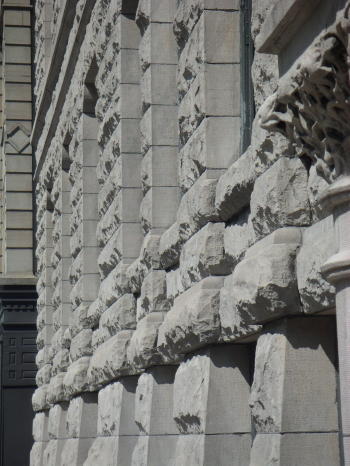
|
| Former Criminal Court Building, scene of legendary trials. 54 W. Hubbard. GTJ Photo. |
When you see
an older building that has survived in Chicago’s downtown, chances are there is a story.
Courthouse Place, at 54 West Hubbard, is now an office building, but for 35 years, it was the old Criminal Court Building
and the scene of many famous trials. Clarence Darrow often figured there, including
in the famous Leopold and Loeb murder
case. Ben Hecht and Charles MacArthur set much of their 1928 play, "The Front
Page,” in this building.
Try to find a way into the buildings that interest you. It may not be possible to get past the guard station, but you often can see a lot even from there. The staffs of buildings are usually flattered if you show an interest, even if they
sometimes cannot let you in. You will have no trouble entering the Fine Arts Building and can explore it top to bottom. Don’t miss this European-style courtyard
café, which is part of an art gallery. At the right is an example of how you will be rewarded by looking into the lobby
of the Rookery.
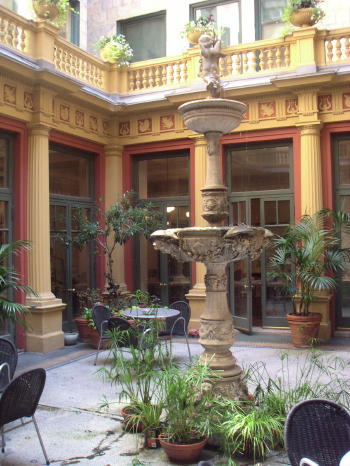
|
| Gallery courtyard, Fine Arts Building. 410 S. Michigan. GTJ Photo. |
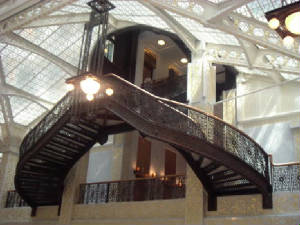
|
| Rookery Building, 209 S. LaSalle. GTJ Photo. |
|
|
|
 |

